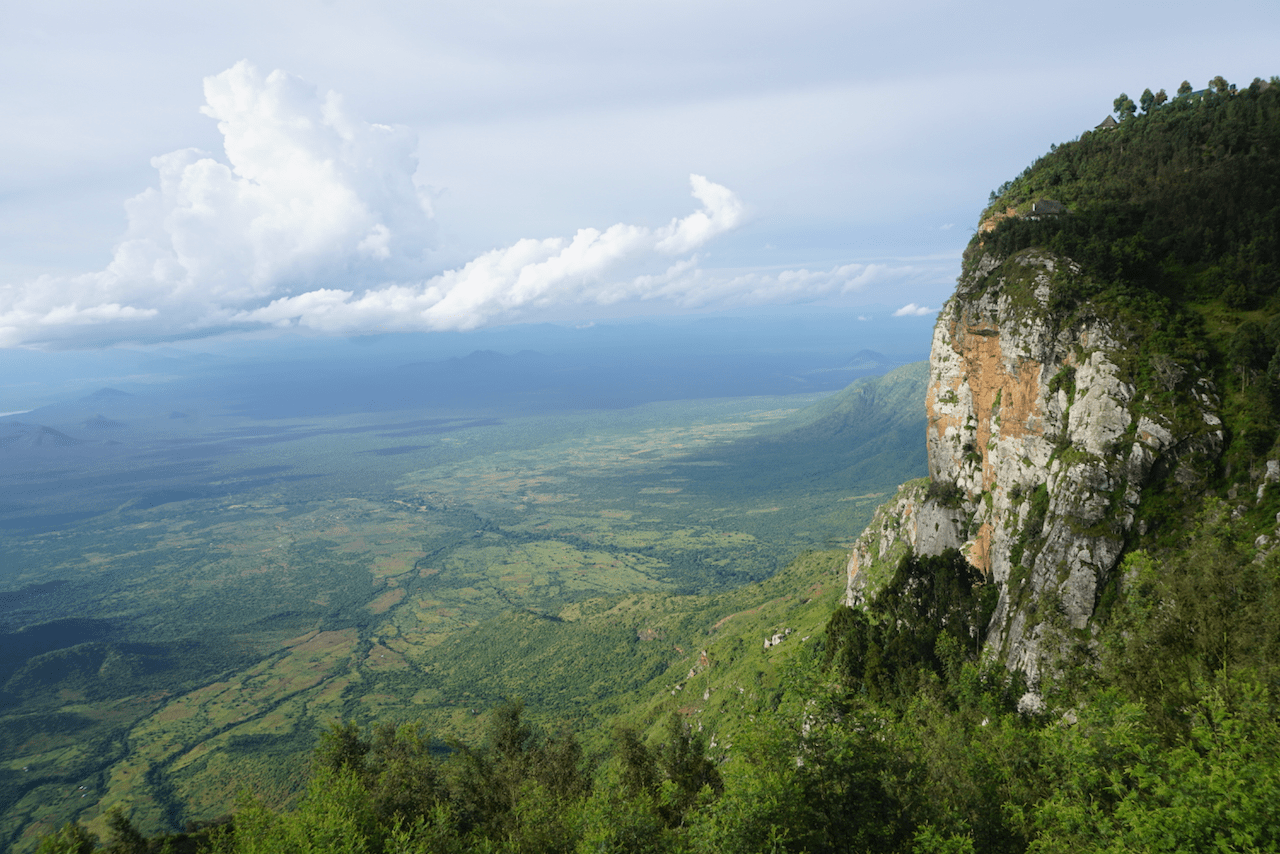Usambara Mountains
The Usambara's are a part of the ancient Eastern Arc chain which mountains stretch in a broken crescent from the Taita hills in southern Kenya down to Morogoro and the southern highlands. They are estimated to be at least 100 million years old and the rocks forming them may be as much as 600 million years old. The mountains are home to an exceptional assortment of plants and animals and represent one of the highest degrees of biodiversity on the continent.


The range is accessible from the towns of Lushoto in the west, and Amani in the east. The Usambaras are commonly split into two sub-ranges, the West Usambara and the East Usambara. The East Usambara is closer to the coast, receives more rainfall, and is significantly smaller than the west.
The East Usambara mountains belong to the Eastern Arc Mountains, which is a chain of isolated mountains stretching in a great arc from Southeast Kenya to Southwest Tanzania. Geologically the mountains are very old – at least 100 million years. The total area of African rain forests diminished due to cold and dry periods which started about 2.5 million years ago. The Indian ocean maintained the moist climate required by the rainforests. The individual Eastern Arc Mountains became isolated from the large African rainforests and finally from each other.
The Climate of the East Usambaras differs from much of the rest of Tanzania. Rain can and does fall at any time of the year although there is a seasonal pattern. Tanzania has a hot, dry season in December-March, and a cooler, dry season in May to October. The ‘short’ rains occur in November and ‘long’ rains in April-May. The climate on the coast can be hot and humid, however, because of the altitude (800-1400m), the East Usambaras are cooler and wetter than the surrounding lowland. The rainfall averages over 1,500mm a year with an average temperature of 20C.
The East Usambaras are fairly densely populated and lie within the more densely populated North of Tanzania. The area contains some 18 villages with a total population of about 15,500. An additional 4,000 people live and work on tea plantations in the area. The population is growing rapidly through a combination of natural increase and in-migration.
Different from the classic picture of East Africa – savannah – this is a lush and green area. The natural vegetation of the submontane forest supports a wide variety of flora and fauna, much of which is endemic and for which the area is renowned both nationally and internationally. It is considered an international ‘hot spot’ for bio-diversity. The East Usambaras are particularly well known for birdlife, with over 350 recorded species. The Usambaras are a bird-watching paradise. Abundant and diverse species can be spotted and according to experts, the Usambaras is one of Africa’s best bird-watching locations.
There are many endemic plant and animal species in the Eastern Arc Mountains – more than 2000 plant species of which about 25% are endemic. Out of the 276 tree species, 50 are endemic! The East Usambara mountains are the closest to the sea (only about 40 km) and due to the moist climate, the number of endemic species is remarkable. There are 16 tree species that can be found in the East Usambaras only. The forests of the East Usambaras have many rare species in all groups of animals, except mammals. High levels of endemism are found amongst mollusks, amphibians, and reptiles. The East Usambaras have been compared to Galapagos Islands with regard to the diversity of endemic species.
The genus Saintpaulia or African violet as it is commonly known originates from North-East Tanzania. During the year 1982, Baron Walter von Saint Paul Allaire, then District Commissioner of Tanga Province, found wild plants with small blue flowers. The species was introduced to horticulture and since then it has enjoyed spectacular and ever-increasing popularity as an indoor plant. Nowadays, the East Usambaras is one of the few places where Saintpaulia still occurs – there are eight species growing in the area.
Visitors come to the Usambaras to enjoy its nature, relax and hike. The main center for visitors in the Western Usambaras is Lushoto town. In Lushoto, you can walk through the arboretum, hike in the forest, look for old buildings from the German and British colonial eras. A fascinating stop is an herbarium (pressed plant library) in Lushoto, which houses 1000s of pressed plants from Tanzania dating back to German times (1886-1916).
Located in the North-Eastern part of Tanzania, Lushoto is dubbed ‘the hill-station of Tanzania “. With the outlook dominated by the colorful mosaic of the Usambara Mountains, this lush area is a welcome retreat from the busy cities and game parks of the country.



